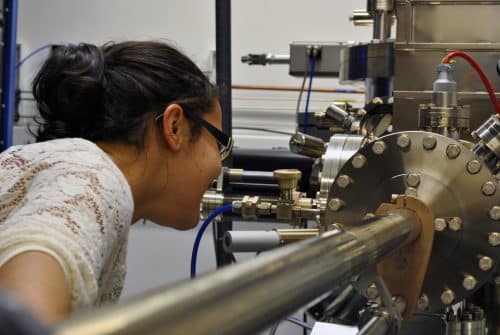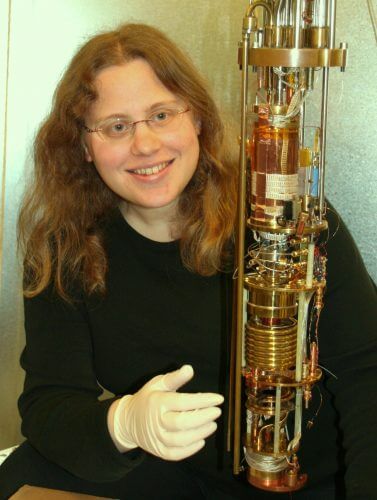Dr. Bina Kalisky from the Department of Physics and the Institute for Nanotechnology and Advanced Materials, of Bar-Ilan University, together with researchers from France, Italy, the Netherlands, Spain and Sweden, are developing quantum technology with the help of two-dimensional interfaces formed between oxides, as part of the QUANTOX project (R.T. of QUANtum Technologies with 2D-Oxides) to be used in quantum computers.

The research is funded by QuantERA, a European research fund shared with 32 organizations from 26 countries and managed by the National Science Center in Poland, and by the Israeli "Innovation Authority" (formerly the "Scientist's Office").
The development of a quantum computer is on the list of hot targets today and research in the field is supported by powerful entities such as Microsoft, Bell Laboratories, IBM and Google and the success of the project will have a great impact on the field of information security. Developing such a computer first requires developing a basic memory cell, a Qbit, using technology based on quantum theory so that it is topologically protected. Despite the enormous technological challenge, the advantage of such computers in calculation speed and immunity from noise lead to the large investment in research and development in the field.
The approach proposed by the QUANTOX research group is to use oxide interfaces for their diverse properties to develop quantum topological systems that can be easily integrated within current technology. These interfaces have a unique combination of physical properties that, according to theoretical predictions, will enable the realization of the conditions necessary for the development of a basic memory cell that will advance us towards quantum computing.

The development process is always complex and challenging. In this project, the challenge is especially great due to the technological difficulty of measuring phenomena based on tiny electric currents in materials where the flow is two-dimensional. The laboratory headed by Dr. Klisky, develops and operates sensors that are particularly sensitive to magnetic field measurements which manage to map extremely tiny magnetic fields down to the field induced by a small number of electrons, or very weak electric currents. The measurement is carried out in Dr. Kaliski's laboratory in a local and non-invasive manner, thus allowing to receive indications in 'real time', even before reaching the complex and slow stages of connecting the memory cell to a complete system, therefore being able to focus the development and speed it up.
Bina: "The advanced technology for magnetic scans that we operate in the laboratory provides enormous development advantages. Especially in areas of research that are carried out in cold temperatures. The realization of the current research begins at temperatures close to absolute 0 and we are passionate about harnessing our research tools to these important goals."
The agreement between the parties was made by the company Birad - a company for research and development Ltd. Bar-Ilan University's commercialization company, which promotes partnerships, corporations and alliances for the management of intellectual property, technology commercialization through risk creation and licensing, promotion of scientific service contracts for use by members of the industrial community while utilizing the knowledge base and technological infrastructure of the university and outsourcing services for the benefit of the business sector under the scientific service division.
See more on the subject on the science website:

2 תגובות
It's still here. Probably the title confused you: "Semiconductor lasers: the next generation".
https://www.hayadan.org.il/topological-insulator-laser-the-next-generation
Tell me, am I drunk?
Just yesterday I read an article in "Hidan" about a development made at the Technion called "topologically isolated laser" (or perhaps it is more correct to read: "laser in topological insulators") and today the article disappeared. Too bad, maybe it was on another site. In any case, below is a link to the article that appears on the Technion website. It seems that the discovery called a topologically isolated laser is actually the discovery that enables the construction of the quantum computer for the reason that it enables a device where the transfer of information is at the speed of light and the beam is not distributed, even under conditions of disorder in the conducting crystal.
https://www.technion.ac.il/2018/02/%D7%9C%D7%99%D7%99%D7%96%D7%A8%D7%99-%D7%9E%D7%95%D7%9C%D7%99%D7%9B%D7%99%D7%9D-%D7%9C%D7%9E%D7%97%D7%A6%D7%94-%D7%94%D7%93%D7%95%D7%A8-%D7%94%D7%91%D7%90/